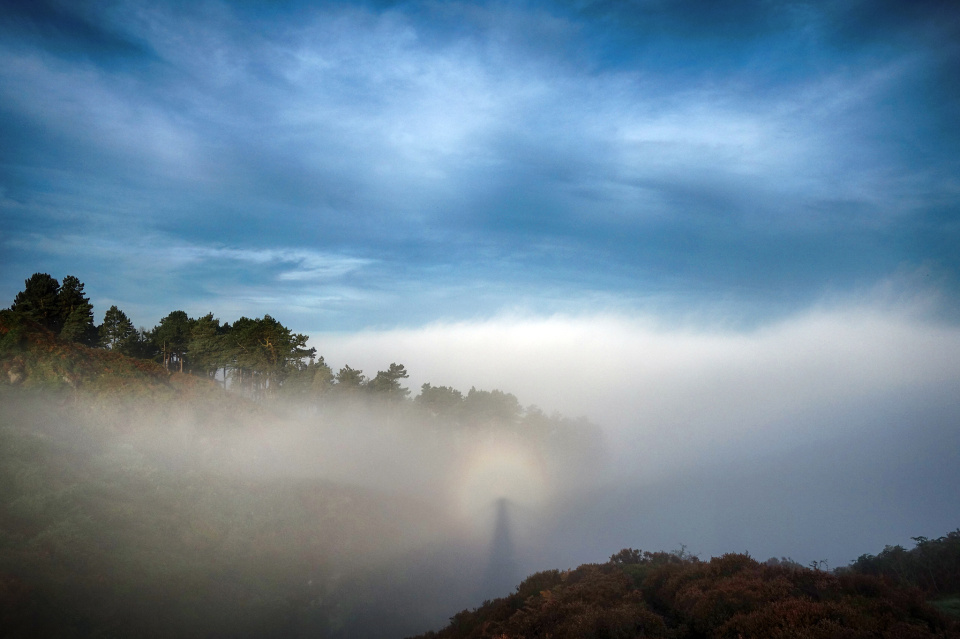


Because this point is diametrically opposite to the sun's (or moon's) position in the sky, it usually lies below the observer's horizon except at sun (or moon) rise and set. Like a rainbow, outdoor glories are centred on the antisolar (or, in case of the moon, antilunar) point, which coincides with the shadow of the observer's head. "Glories can be seen on mountains and hillsides, from aircraft and in sea fog and even indoors." In the right conditions, a glory and a rainbow can occur simultaneously. The angular size of the inner and brightest ring is much smaller than that of a rainbow, about 5° to 20°, depending on the size of the droplets. The rings are rarely complete, being interrupted by the shadow of the viewer. Glories arise due to wave interference of light internally refracted within small droplets.ĭepending on circumstances (such as the uniformity of droplet size in the clouds), one or more of the glory's rings can be visible. Due to its appearance, the phenomenon is sometimes mistaken for a circular rainbow, but the latter has a much larger diameter and is caused by different physical processes. The glory consists of one or more concentric, successively dimmer rings, each of which is red on the outside and bluish towards the centre. The position of the glory's centre shows that the observer was in front of the wings.Ī glory is an optical phenomenon, resembling an iconic saint's halo around the shadow of the observer's head, caused by sunlight or (more rarely) moonlight interacting with the tiny water droplets that comprise mist or clouds. Optical phenomenon that resembles an iconic saint's halo about the shadow of the observer's head


 0 kommentar(er)
0 kommentar(er)
